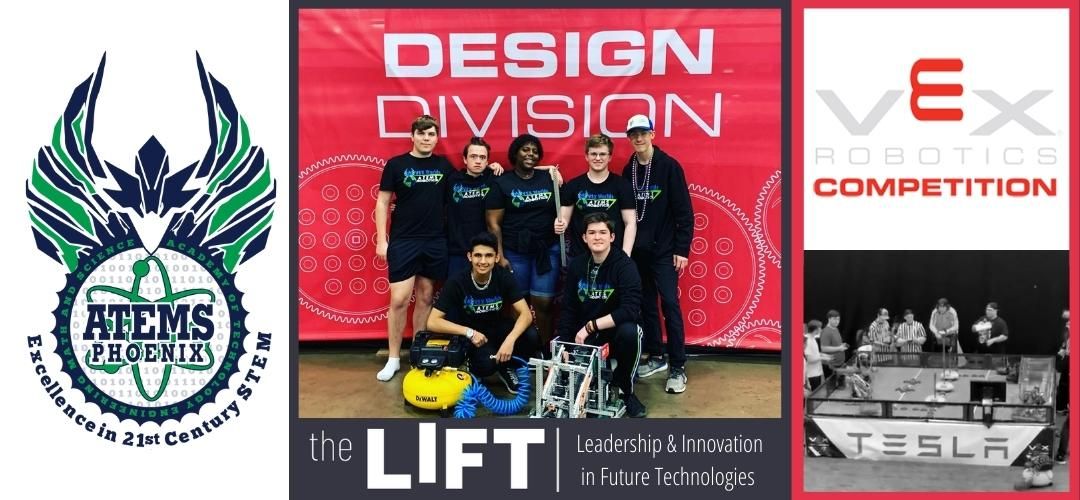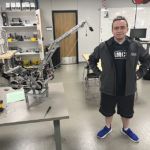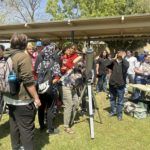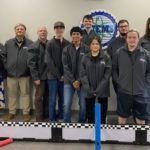The VEX robotics team from ATEMS competed at its first World Robotics Championship May 5-7 at the Kay Bailey Hutchinson Convention Center in Dallas, and while the results might not have been what the team wanted, the impact of that first exposure to competition at that level will have positive ramifications for years to come.
Competing in the Design Division, the VEX Robotics 9871B team finished 32nd in its 81-team division. With more than 800 high school teams from 49 different countries competing, the field was broken down into 10 different divisions.
During qualification matches, the team from ATEMS worked its way up to 21st in its division, but along the way was having trouble navigating the language barrier brought on by being teamed with teams from all over the globe. The ATEMS team was eventually paired with a team from Mexico and the language barrier was more than the team from Abilene could overcome, greatly contributing to its drop to 32nd.
The ATEMS / Mexico combo scored 251 points for its high-scoring match in the division during qualifying matches. The team finished with a 6-4 record in qualifying, which was not enough to move to the elimination rounds.
ATEMS robotics instructor Larry Haney said that despite not reaching the elimination rounds, the ATEMS team had a successful weekend.
“The takeaways from an opportunity like VEX Worlds is huge, not only for the team attending but for the entire ATEMS Robotics program,” Haney said. “Seeing robotics at that level has exposed the team to build ideas and team management ideas that they have never seen before. The students were exposed to the importance of scouting, making relationships with other teams, and having a quality engineering notebook, which are all things that happen outside of the competition field.”
With the world getting smaller with the advent of Webex, Zoom, and other online meeting platforms, Haney said working with the international teams will pay off for the ATEMS students in the near future.
“We live in and work in a global economy,” he said. “Being exposed to teams from other parts of the United States and to teams from other countries has exposed them to communication challenges that are very real world. They had to brainstorm and try to figure out how to overcome the language barrier, something most people may never experience.”
The members of the team who will be returning to ATEMS in 2022-23 are already putting their thoughts together on how they can improve their robot before next year’s competition.
“The ideas are already flying around,” Haney said. “They have seen mechanisms that they will use next year. These students have seen how higher-level teams from affluent areas have advantages that they know they can overcome. ATEMS Robotics teams know they can compete at a world level and those teams are raising the bar as we speak.”












